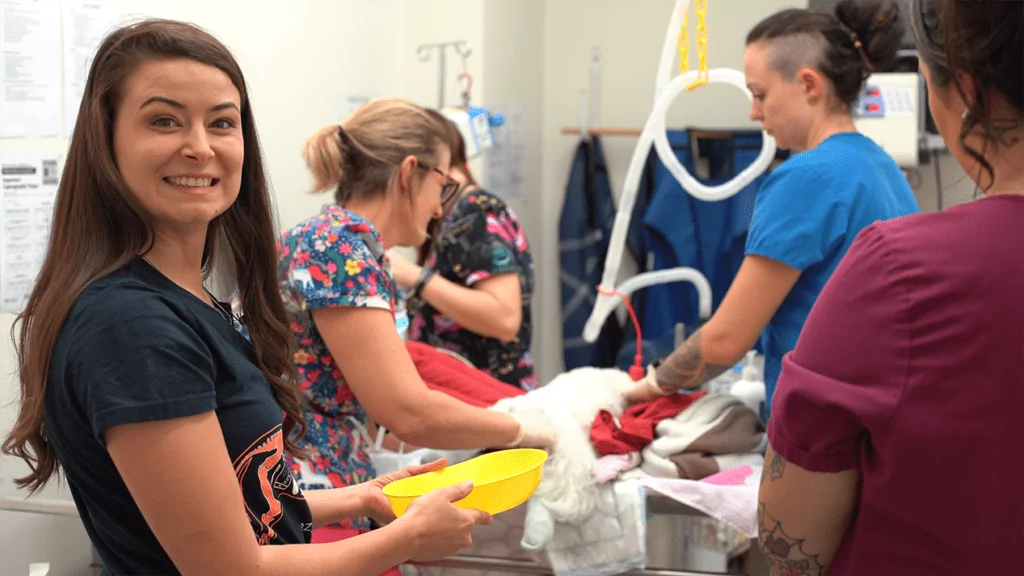Thinking of opening a new veterinary practice business but don’t know where to start? We’ve got you covered.
We’ve put together a high-level overview of everything you need to consider when opening a new veterinary practice.
Planning for Success
Success lies in the details; business success is no different. Comprehensive planning is critical for reducing uncertainty and maximizing your chances of success in the long term. Below are some key considerations to keep in mind when planning your veterinary practice.
Required Skills and Experience
Passion alone isn’t enough to succeed in business. Yes, you’ll need a love for animals, but you’ll also need to be pragmatic, numbers-oriented and bring the right blend of skills, experience, and ambition to the table.
Starting a business – and a veterinary business, in particular – is not for the faint of heart. Bring a balance of technical aptitude, enthusiasm, and determination, and surround yourself with people who believe in your vision.
Vision, Voals, and Market
Market fit is an important consideration for any business. As an aspiring veterinary practice owner, you must establish a solid case for opening a clinic. Consider the needs of the community and where your clinic will fit into the broader business landscape.
What’s the population? How many pets live locally? How many other veterinary clinics are located nearby? The answers to these questions will help determine the viability of your practice.
Business Plan
A comprehensive business plan is a strategic tool that sets out your goals, along with the actionable steps you’ll need to take to achieve your short- and long-term objectives. Map out your goals, create a timeline of milestones – each with its own deadline – and break down each milestone into critical tasks and deliverables.
Financial forecasting is a crucial element of a business plan and should include your projected expenses and returns, along with a clear plan of how you’re going to service the debts that you’re likely to incur while getting your business off the ground.
Services
Defining a clear set of services as early as possible will make your life easier in the long run. What animals will you treat? Will you specialize in wellness plans and minor surgeries, or are you looking at doing dental, dermatology, or eyecare? Are you going to offer emergency care?
Will you operate in-clinic, or offer mobile services – or both? It’s important to narrow down your options into a structured service offering so that both you and your clients are on the same page come opening day.
Pricing
Pricing requires research and intel. Think about the demographics in your area – what can your local pet owners afford? To get started, look at the pricing of other local veterinary practices. The aim here isn’t to blindly undercut the competition but to consider how prospective customers value your services and the competitive factors that differentiate your business from other veterinary clinics and set your prices accordingly.
If you charge fairly for the exceptional services your team provides, everyone wins!
Location
Location is key! There are many factors at play when it comes to choosing your location, including availability, affordability, suitability, how future-proof the site is, foot traffic, accessibility, who the landlord is, and so on.
There are a lot of variables to consider here, so write down your must-haves, your nice-to-haves, and the things you’re willing to compromise on. Location can make or break a veterinary practice, so don’t rush into anything. It might be tempting to jump on the first opportunity that comes your way, but being patient and waiting for the right site will yield the best results in the long run.
Building vs. Renovating
Are you taking over an existing clinic or building from the ground up? There are pros and cons to each.
While building a new facility gives you total creative control over the design and layout of your practice, there are significant costs involved with the construction process. In addition, if you’re opening your veterinary practice in an urban area, you may find it difficult or prohibitively expensive to find a suitable site to build.
In contrast, taking over an established practice might be more cost-effective, but there’s a good chance you’ll still need to do some renovations to bring the property in line with your requirements.
Whichever route you go, we recommend talking to an architect who can guide you through the design and construction process and help you negotiate the red tape you’re bound to encounter along the way.
Costs and Financing
It’s highly unlikely that you’ll be profitable in your first year of business. There are a lot of expenses to cover before you even open the doors – fixtures, equipment, renovations, and so on – as well as the running costs when the clinic goes live.
Veterinary practices are generally viewed favorably by banks, which makes it relatively easy to raise capital. Regardless, the first few years will likely be tight and may involve sacrifices and lifestyle changes. Be sure to talk to a financial professional for more information.

Administrative Setup
While the legal requirements for starting a business can vary by jurisdiction, the same basic rules apply. We strongly recommend you tackle these milestones with a legal professional to ensure you cover your bases.
- Step 1: Form a legal entity.
- Step 2: Acquire a domain name.
- Step 3: Register for your taxes.
- Step 4: Set up a business bank account and credit card.
- Step 5: Set up business accounting.
- Step 6: Source all key permits and licenses.
- Step 7: Get the right insurance. Sometimes it pays to shop around!
Tools of the Trade
It’s not often that you get to start a veterinary practice from scratch. You’re working with a blank slate, so use this as an opportunity to overhaul your processes and explore new systems that will allow you to do business on your terms.
Cloud-based veterinary software, for example, can automate many of your daily tasks while allowing you to remotely access and manage your clinic from anywhere with an Internet connection.
Below are some of the tools your practice will need to hit the ground running:
- Practice management software.
- A website.
- Devices, including computers, iPads, and tablets.
- Diagnostics, X-ray, and ultrasound.
- Printers and labeling machines.
- Point of sales system.
- Phone lines.
- Telemedicine.
- Electronic whiteboard.
- Controlled drug storage and registry.
- Prescription management and dispensation.
- Reference laboratory, distributors, and supplier accounts.
Recruitment and Marketing
You’ve put a business plan together, sorted your finances, and have a clear idea of the tools you’ll need to run your practice. Now, it’s time to hire your team and establish a strong brand image!
Hiring the Right Team
Unless you plan to do it all yourself, you must start assembling a team. Most practice owners start by hiring a practice/office manager. A veterinary practice manager is responsible for overseeing the day-to-day operations of the practice and freeing up your veterinarians to focus on practicing medicine rather than getting bogged down in the details of running a business.
This should be done early in the venture, around the same time you acquire an accountant, a lawyer, a real estate agent, and maybe an architect.
With the help of your practice manager and perhaps a DVM consultant, you’ll need to look for technicians, receptionists, nurses, kennel attendants, groomers, and any other specialists your new practice will need. Seek professionals with a strong understanding of the veterinary industry, the right attitude, and a passion for animals and people.
Finally, it could be a good idea to hire a marketing and social media professional to get your new clinic on the map. Ongoing customer engagement through social media is vital for any successful clinic.
Establishing Your Brand
You can’t run a successful business without any clients. And you can’t get clients if nobody knows your business exists. So, let your community know there’s a new veterinary practice in town – holler from the rooftops!
Below are some practical ways to let your local pet-owning community know you’re open and ready for business.
Social Media
Like it or not, a solid social media presence is crucial for increasing brand exposure and connecting with your clients and community outside of in-clinic interactions. Facebook and Instagram are great places to start, and the sky is the limit in terms of content.
Cute patient photos, animal care tips, news stories, animal trivia, community events, and staff spotlights are all great examples of content you can share on social media. Be sure to join your local community Facebook group to introduce yourself!
Website
A good website is the heart of your online presence and an essential business tool. This might be your client’s first point of contact with your practice, so think about your audience and the information they would expect to find on your website. This might include a description of your services, information about your veterinary team, contact details, a photo gallery, etc.
Traditional Media
There are a plethora of ways you can advertise. Digital advertising, radio ads, neighborhood newsletters, newspapers, and magazines are all good ways to build brand awareness and reach new audiences. Print media such as billboards, posters, and banners can also help boost brand visibility and keep your veterinary practice front-of-mind in your local community.

Opening Day
Have a big party! Invite pet owners in your community and their furry friends along for an afternoon of mixing and mingling. Making a good first impression with your community can go a long way in building trust and long-lasting client relationships.
Bumps in the Road
It’s not always going to be smooth sailing when starting up a new practice. Roll with the punches, expect the unexpected, and be prepared to revise your plans as you go. Growing pains are expected, and it can take a few years before it feels like your practice is running smoothly.
Keep pushing through the challenges – it’ll make success that much sweeter in the long run. Don’t forget to pause every now and then to celebrate the wins, reflect on the losses, and set new goals for the future. Best of luck!
Learn More
For more information on starting your own veterinary practice, check out this free downloadable guide. Moreover, if you have questions you’d like to ask a new practice expert, reach out. ezyVet helps 2-3 brand new veterinary businesses go live every week. A consultation is FREE with no obligations.

